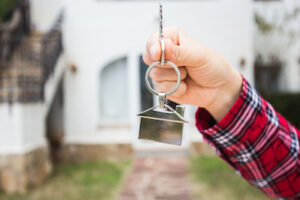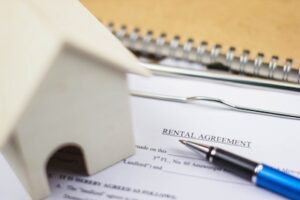Rental Property Common Problems and Solutions
Far too many rental property owners, real estate investors, and landlords learn the hard way how to be more effective and efficient at managing a property through problems they go through. So, what are some common rental property problems and solutions?
Some common rental property problems are tenant turnover, choosing bad tenants, and poorly structured or regulatory non-compliant leases. Also, some common solutions to these problems are understanding why your tenants may not be renewing, making new possible tenants go through a tenant screening process, and background check, and creating a rental agreement that covers all the bases.
So, now that you have an idea of the common rental property problems and solutions, let’s examine each of them in greater detail.

The Problem of Tenant Turnover
What Is Tenant Turnover?
Tenant turnover is the rate at which residents end or do not renew their leases. Every landlord has tenant turnover. It is the high rate of premature turnover and non-renewal of leases that can cost the property owner or landlord in time, money, and expended vacancies.
What Causes Tenant Turnover?
It can be easy to point to “bad tenants” as the cause of high tenant turnover. The problem, however, can go much deeper. While the issue of problem tenants will be addressed later in this blog, here we want to look at more property-related problems that contribute to higher tenant turnover, and why it could be a good idea to take a real estate or property developer course.
Living spaces that have not been modernized or updated can leave a tenant wondering if they could do better elsewhere. Even if the landlord otherwise responds responsibly to maintenance issues, it may not be enough to prevent turnover. Older appliances should be updated even if they seem to be working properly. This allows the tenant to see the landlord as more than just someone who is there to collect the rent. If the tenant feels like they are constantly calling for maintenance, it can create dissatisfaction, even if those constant problems are addressed quickly.

Solutions to High Tenant Turnover
Understanding why your tenants may not be renewing is a good place to start. Be conscious that improvements keep up with rate increases. Schedule cost-effective upgrades and carefully review rent increases regularly. Budget for more significant improvements, like energy-efficient appliances, quieter windows, and durable, easy-to-maintain faux hardwood flooring. You can attract clients who are a good fit with digital locks and security systems, lighting, and digital thermostats. A tenant is a client that needs continued nurturing. They will seldom be satisfied with just renting the same space. You can minimize turnover by demonstrating you are interested in enhancing their living space.
The Problem of Choosing Bad Tenants
Choosing bad tenants can be one of the most costly self-inflicted problems landlords can face. It is selecting tenants that, for one reason or another, create problems as residents. Bad tenants can cause massive problems with cash flow, create costly damage to property, and lead to evictions and high vacancy rates.
Anyone who has been a landlord for any length of time can share tales of nightmare tenants. But what are the causes and how can you resolve the issue?
What Causes It
Picking bad tenants can be caused by a series of mistakes including, poor judgment, lack of an effective tenant screening process or a poor or non-existent background check. In some cases, a landlord’s own desperation to fill a lingering vacancy can lead to choosing what ultimately turns out to be a bad tenant.
Potentially, bad tenants may demonstrate signs as applicants. They may have a spotty employment record and struggle with the ability to come up with deposits and fees. They may prey on the good nature or sympathy of a landlord. Signs that you have a bad tenant in place include increasingly late or partial rent payments; complaints from neighbors; poor interior and/or exterior property care; excessive visitors; signs of drug use; and signals that the tenant may have legal issues. Noise complaints, utility shut-offs, and infestations are also sure signs you have an issue. There are preventative steps you can take to avoid bad tenants.
Solutions to Choosing Bad Tenants
Habitually choosing bad tenants can be addressed through a tenant screening process and a thorough tenant background check. Applicants should be able to meet clear minimum standards to qualify to rent space, and a rental lease should clearly identify unacceptable behavior to minimize issues bad tenants can create.
Beyond effective applicant screenings and background checks, you want your property to attract more qualified tenants. This can be done through property upgrades. Purchase higher quality appliances at scratch and dent prices, and upgrade windows and countertops. Improve lighting and security, all of which have become more critical to today’s tenants. It may sound overly simple, but a key to helping to avoid choosing bad tenants is to enhance properties so that they will attract a better grade of tenant.
Upgrading properties may not only result in better tenants but may minimize repairs, improve ROI, and increase tenancy length. If you have found yourself with a resident who qualifies as a bad tenant, do not delay. Start eviction procedures as soon as you can. Remember, no matter how long a vacancy has sat open, you are usually far better off letting it sit vacant than taking on the problems that can be caused by a bad or problem tenant.
The Problem: Poorly Structured or Regulatory Non-Compliant Leases
What It Is?
These are documents signed by both the tenant or tenants and the landlord or property management company outlining and detailing the terms of the lease. It should serve to protect both parties and detail the conditions in which the lease may be terminated. Poorly crafted lease agreements and those that don’t take into consideration local tenant and landlord regulations can create a host of issues.
What Causes It?
This generally results from using a generic rental lease agreement that may not even comply with local or other tenant and landlord regulations in your state. In many cases, it results from a landlord’s attempts at saving a few dollars by copying a lease that may be unenforceable or ineffective. Poor leases may also be the result of automatically renewable leases that have been in place for years. Avoid issues by reviewing all leases and recognizing when they are up for renewal.
Solutions to Using a Poorly Crafted Lease
The solution to using a poorly constructed lease agreement is to create a rental agreement that covers all the bases. This including local tenant and landlord regulations. This lease agreement may even include options for partial or split payment plans for tenants that can help landlords avoid costly evictions. Other features to consider in the rental agreement include a requirement for tenants to carry renters’ insurance. It is imperative that any lease agreement is reflective of state and local laws. This should cover notification time-frames for property inspections, eviction procedures, and even property use guidelines like when and where basements may be used as bedrooms.
This is also the time to consider whether you want to allow pets, and what kinds and sizes. As well as how your pet policy will affect fees and rent. It is estimated that about 15% of all renters nationwide are behind on their rent. Of those, over 25% are believed to be behind by three months or more. Yes, being a rental property owner, investor, or landlord has its challenges, but you can become much more efficient and effective with the right tools and forms.

Conclusion
For some, it can result in their giving away some of their monthly profits to a professional property management group or in giving up their investment(s) altogether. There is a better way. It is to use the experience and knowledge of others in not only identifying common rental problems. But in offering real solutions to these common challenges landlords face. Protect your return on investment while minimizing your hassles as a landlord by acknowledging and resolving these common rental property problems. Thanks for reading!
